Photo
Loving this post by an amazingly brave woman. Thank you so much for sharing your story!

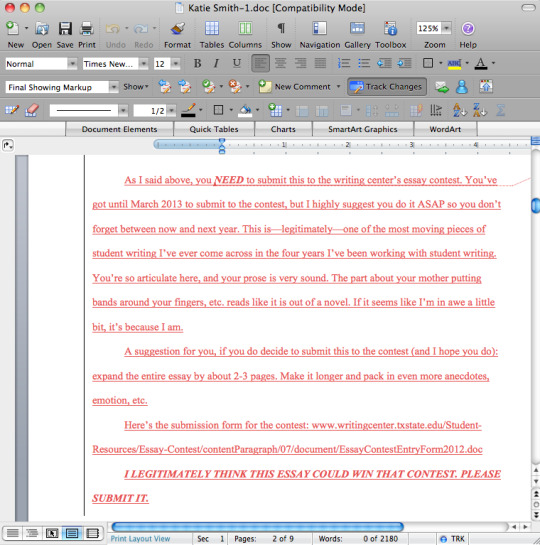
Below is an essay I wrote in my English 1320 course in the Spring of 2012. The prompt was to write about a personal borderland, or struggle, that we have experience in our lives. My professor Carter Maddox encouraged me to write about what it was like growing up with an undiagnosed learning disability and then later insisted I submit this essay to the Writing Center Essay contest.
A few years ago I decided wanted to keep a journal of some sort, however because my handwriting is so terrible the idea of a handwritten journal was not appealing, so I turned to Tumblr, therefore explaining my handle ScratchedOut27. So, I feel it fitting to post my essay here. My professors overwhelminly positive response to this essay meant so, so much to me. To have a person, who I am sure has read more pieces of writing than I can imagine, to say that my essay about my chicken scratch penmanship is one of the most moving pieces of student work he has ever read is just crazy awesome. I always found my learning disability to be so dumb, but here now, in this moment, I appreciate it.
Thank you so much Carter for being an incredible professor.
ENG 1320
Carter Maddox
2 May 2012
Trapped Words
Words and thoughts trapped never read or understood, always messy and forgotten—everyday I struggle to free myself from my own personal borderland labeled dysgraphia, a transcription disability. My psychological borderland may be nothing like the many inflicted upon Gloria Anzaldua in “How to Tame a Wild Tongue”, yet the silencing of my written voice by its own creator, my hands, negatively affected my self-esteem and academics until I embraced and adapted to my dysgraphia.
As a child the chicken scratch writing, barely legible, often mistaken as a boy’s handwriting, created such grief and frustration my positive development as an individual hindered. At four years old my mother put rubber bands on my fingers and around my wrist forcing me to hold my pencil correctly. Her attempts did little but anger me. For Christmas, Santa gave me special pencil grips, but still I could never master the “Tripod Pencil Grasp”. In kindergarten the teachers took away my jumbo fat pencil, replaced by the more debilitating standard number two pencil. The first grade arrived and it was time to learn how to properly write the alphabet. I excelled at ‘O’s but that was about it. My letters never looked like the example or my fellow classmates, mine were ugly and muddled. During recess, girls made ‘signs’, drawing each other’s names in fancy bubble letters with markers. In my attempt to fit in I would join them, yet it would only result in mockery and insincere laughter, my ‘signs’ never looking half as good as the other girls. I felt so stupid and inadequate. I am a perfectionist and it kills me to have such awful handwriting and I never knowing why. Many people said it would improve in time, it never did. What additionally aggravated me was my mother’s own famously beautiful penmanship. Such elegance she can give to a simple checklist, every letter evenly spaced connecting to the next with perfect flourish. Friends and family often would assume or ask if I inherited my mother’s gift of calligraphy, only to discover my disappointing illegible scribbles. I envied her talent, which to her held little value. I spent hours tracing over her words hoping to memorize each motion. It never stuck. My poor handwriting, this seemingly silly borderland, has affected me so greatly I am too embarrassed to write letters or ever volunteer as scribe for group project. My messy handwriting bothers me so much I even feel less feminine. What real woman, more so what sorority woman, cannot write a letter of gratitude by hand like traditionally done? Sadly I cannot, and for the longest time I never had an answer as to why.
The embarrassing chicken scratch became my unwanted trademark even in high school. Friends would tease me and constantly ask how I could even read my notes. I had no quick defense to spat back; I honestly could not read my notes. My illegible handwriting, later to be diagnosed as dysgraphia, had such a tight rein on my academic performance, thus my grades suffered. Not until sophomore year of high school did I discover I have the learning disability. Dysgraphia is a transcription disability, meaning that it is a writing disorder associated with impaired handwriting. Individuals with dysgraphia, like myself, often have underdeveloped fine motor skills therefore have difficulty with the processing of written words and finger sequencing, the movement of muscles required to write. Dysgraphia can overlap with other learning disabilities such as dyslexia or attention deficit disorder, ADD. Before ever having knowledge of dysgraphia, I was diagnosed with ADD, but at the time I was tested for attention deficit disorder I was too young confirm apparent dysgraphic symptoms. By far the greatest factor of the learning disability many people cannot fathom is the inability for the dysgraphic individual to comprehend the information once written. Although my handwriting is extremely messy it is possible for some people to read, however this does not benefit me because I myself cannot read my own handwriting. I finally had a real answer, yet the diagnosis did little to improve my situation or feeling towards my handwriting. Quick from the start, I developed early as a toddler, teaching myself to read at barely three years old so it seemed unlikely for the dysgraphia to result from intellect yet, as a child unknowingly dealing with a learning disability I thought I was stupid. As I matured I understood my psychological borderland did not result from a lack of intelligence, I just could not write well and until I adapted to the disorder I would not succeed. Annoyed and dismissive, teachers would not believe me when I explained the learning disability. No reasoning or compassion was given and instead teachers thought me to be lazy and only filled with excuses. I was expected to take notes by hand like everyone else, but unlike everyone else I could not read them. I remained embarrassed to have some else edit my writings, not afraid of their opinion of the quality of my ideas, but of the fear they would be incapable of deciphering them. So I took extra time and conscious effort to write as neatly as possible but still the letters and words blurred together. No matter how invested or interested in the subject matter I could not decode the scribbles and scratches that filled the lined spiral pages. Like how Anzaldua was expected to speak a certain language, ”to accommodate English speakers rather than having them accommodate,” teachers expected me to write in a copy they could read not one that accommodates my needs (Anzaldua 81). Almost even more classic than the Diet Coke addiction is the teachers red inked cursive commentary, always in the footnotes of my handwritten papers or assignment my teachers would mention the indecipherable handwriting or deducted for neatness. At times I felt it was completely unfair for points to be docked because my assignments were messy, my thoughts or arguments were not inadequate but their physical appearance. Until teachers accepted my learning disability and were willing to adapt “my tongue will be illegitimate,” my thoughts trapped and never given the credit deserved (Anzaldua 81).
Not until a student in university have I successfully adapted to my learning disability. I came to college expecting to utilize my laptop for note taking only to discover most professors do not allow students to use laptops or other electronic devices in class. I placed all hope in the keyboard of my new MacBook Pro, shocked by the anti-technology policy I spoke with my Cultural Anthropology professor. Luckily she was nice and understanding, but explained to me most professors will not be so tolerate. We cut a deal, for the first unit she required me to handwrite all of my notes, the second unit I would type the lecture notes, if my second exam grade improved dramatically than the first exam I would be allowed technology privileges. As expected I failed the first exam, I had to rely solely off of notes I could not even read. It may have been the study of past cultures, however it did not mean writing like a Neanderthal was acceptable. After typing notes my exam grades went from a low D to no lower than a 98. That experiment confirmed the best solution to deal with the dysgraphia was to get approved technology privileges. Hesitant and embarrassed to register with the Office of Disability Services, I arranged an appointment with an adviser to discuss my options. I am still shy to mention I am approved by ODS, but I should have no shame, my academic success was in jeopardy and I took the initiative necessary to secure it. Yes it took a few years to finally accept my dysgraphia like Anzaldua said, “I will no longer be made to feel ashamed of existing. I will have my voice,” (Anzaldua 81).
I spent so many years frustrated and aggravated with myself wishing I could just be normal, unknowing I would one day accept my dysgraphia, the psychological borderland that created lower grades and lower self-esteem. I have had to adapt and adjust with my dysgraphia. I try to be as electronically efficient as possible, typing my notes and keeping an agenda in my phone. I refuse to allow my deficits drown me. It is unimaginable how something so small like the way you write affects the rest of your life. Everyday I am forced to face my biggest challenge and my borderland releasing my words.
I have attached a handwritten version of my essay for a reason. Although you expect our essays to be typed, thank God, some teachers and professors in the past have only accepted handwritten papers or essays. In these cases I can’t help but wonder how often the legibility of handwriting has come into factor. Would my grade be any different when typed versus the same handwritten version? I understand not everyone has perfect penmanship and most people are in rush to complete their thought before it escapes them, yet I am still curious. If you had asked for a handwritten version on our paper would you be able to not only read mine entirely but also understand my written voice? Or would you be distracted by its imperfection visually, unable to make out any valuable thoughts?
I ask this because when I physically write an essay I personally feel my written voice fade. I become too stressed just trying to write neatly enough that all desire to write dies. Even though I can barely read my writings I feel like the reader would be able to sense this somehow. It may just be because I know myself but I just wonder if there is any difference between the papers.
Works Cited
Anzaldua, Gloria. “How to Tame a Wild Tongue,” Borderlands/La Frontera, The New Mestiza.
3rd ed. San Fransico: Aunt Lute Books, 1987. 81. Print.
The revised handwritten version corrupted so attached is the original file prior to suggested edits by my professor.
49 notes
·
View notes
Text
Sensory Seekers in the Classroom
Sensory Seekers in the Classroom
I want to share an e-mail that came through this week about a little guy at one of my schools. Names have been changed...
Hi Helen,
We have a 1st grader at Lincoln Elementary in Tammy’s class who has Autism. He is provided a number of supports to help him manage his self-soothing, sensory-seeking behaviors (such as using a Fidget Frog that he squeezes and shakes). He frequently tips his chair back. We're thinking he might benefit from a wiggle seat or cushion for his chair, to prevent him from tipping it back. We're wondering if a weighted lap pad or stuffed animal might also be beneficial. Could we ask you to do an observation / consultation to see if this might be beneficial? He had OT services previously but was exited in 3/2011. His name is Johnny Depp
Thanks,
Amy
And what I proposed:
When looking at a child like this, it's important to look at which sensory system they are seeking, and self regulating from, i.e.
visual
vestibular
proprioceptive
touch
auditory
We made up a PECs photo board for him with the words attached for the different sensory choices he could make. Even though he had emerging reading skills, we wanted him to make quick choices so he could quickly transition to the class situation he was supposed to be in.
The choices included:
a child sized rocking chair with a cushion
a pressure vest
a weighted vest
a lap buddy
a squeezy fidget ( a large one)
a small fan (for visual stim)
a book on tape with headphones
headphones for quiet time
a wiggle cushion
Most frequently he chose the rocking chair with the pressure vest and the headphones without the book. He liked the squeezy fidget.
So what this tells us about Johnny is that he is under-responsive to stimulus and needs deep pressure to register their sensations. Perhaps with the exception of auditory. He may feel overwhelmed with noise in the classroom and need a break from that.
Now that his system is self regulated he is ready to learn!
#spd#special needs children#occuaptional therapy#therapy#child development#occupational therapy activites
3 notes
·
View notes
Text
Sensory Processing Disorder and Dysgraphia
Sensory Processing Disorder and Dysgraphia
I recently responded to an e-mail from a parent who asked about the connection between sensory processing disorder and dysgraphia. She said her child had a diagnosis of SPD and had met criteria for difficulty with sensory modulation, sensory discrimination disorder, and sensory based motor disorder including dyspraxia "reflecting the complexity of her presentation". The parent asked for resources that would further explain the connection between SPD and dysgraphia.
What a great question!
It occurred to me that parents might not realize that the word processing when used in sensory processing disorder is a different term than when used in dysgraphia in the context of a learning disability.
SPD in the simplest of terms is a disorder involving sensory input and regulation. Learning disabilities are an impairment in cognitive processing in the areas of language, math, writing, memory and executive function, among other brain functions. SPD and learning disabilities all fall along a continuum from mild to more severe.
So in answer to the question "What is the connection?", SPD and dysgraphia are two separate issues. A motor dysgraphia is defined in Dysgraphia: Your Essential Guide as being without a coordination disorder. A processing dysgraphia is defined as to do with the brain's inability to remember letters and words in order to write them.
Do we ever see kids with SPD who have dysgraphia?
Yes!
Do we ever see kids with dysgraphia who have SPD?
Yes!
#dysgraphia#LD#learning disabilities#spd#sensory processing disorder#occupational therapy#child development#special needs children#therapy
5 notes
·
View notes
Text
Thank you ldonline!
It was a big validation to be endorsed by ldonline for my recent book Dysgraphia: Your Essential Guide. Thank you so much!
Becoming an author makes it possible to reach out to more people than you can possibly see in the course of a career.
As I say in the book, thank you for reading my book, and for helping someone with dysgraphia.
1 note
·
View note
Text
Should you switch hands to draw?
It depends on which type of dysgraphia you have. There are 3 types. For motor dysgraphia some simple exercises can be done to help with the motor skills necessary for good pencil control. If you haven't already tried them, pencil grippers can help too. If you have spatial dysgraphia, it could be that your visual spatial skills are messed up and your ability to perceive what you are trying to draw and then accurately draw it are not in sync. This will not change with you switching hands. Processing dysgraphia has to do with letters and words, not having an image/memory of the letters and words in the mind's eye and therefore not being able to form them with your hand to write them.
Hope this helps!
Helen Painter, Occupational Therapist
www.dysgraphia.net
0 notes
Text
Dysgraphia: Your Essential Guide
I was working on a little project this past year, and just had my book published on Amazon last week! Woohoo. My favorite topic, handwriting struggles, dysgraphia and how to help people with it. It's easy when you know how! Take a peek. It's been in the top 10 or top 20 in the learning disabilities genre over the past week, so I'm pretty tickled.
http://www.amazon.com/s/ref=nb_sb_noss?url=search-alias%3Dstripbooks&field-keywords=dysgraphia&rh=n%3A283155%2Ck%3Adysgraphia
I also created a website to support the book with downloads that's at
www.dysgraphia.net
If you like it, post a review on Amazon.
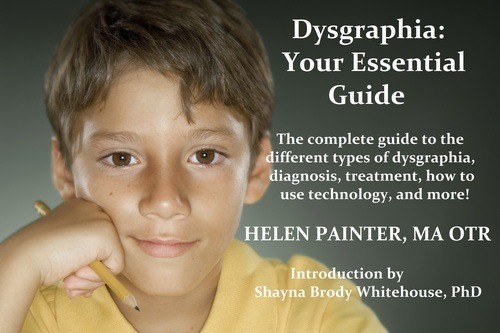
5 notes
·
View notes
Text
Dysgraphia symptoms in children aged 4-6
Dysgraphia symptoms in children.
The top 10 symptoms in children aged 4-6.
While it takes a specialist to accurately diagnose dysgraphia, especially to determine which one of the 3 types you may be dealing with, parents and teachers can spot these tell tale symptoms pretty early on.
Here we go:-
Having a hard time learning the alphabet
Can't learn the letters in their own name
Avoiding fine motor stations at preschool or Kindergarten
Avoiding all writing or drawing activities
Poor scissor skills
Immature pencil grasp
Difficulty with letters with curved shapes
Switching writing hands
Tears and breaking down
Feelings of being dumb
The 3 types of dysgraphia are
Spatial
Motor
Processing
Dysgraphia can occur alone or with other conditions such as dyslexia, ADHD and Autism spectrum disorders.
23 notes
·
View notes
Photo
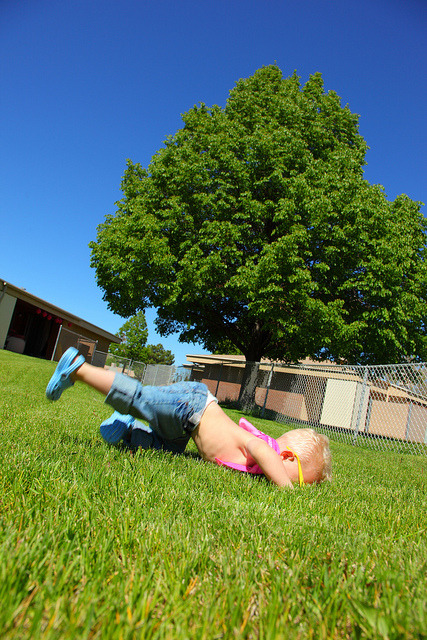
Dyspraxia; what is it and how do Occupational Therapists help it?
Clumsy.
Accident prone.
Klutz.
Too big for her body.
Poor Coordination.
These are all terms you might have heard to describe a child who has dyspraxia, which is a developmental coordination disorder. It is the partial loss (as opposed to complete inability) to coordinate and perform motor tasks.
Tasks like handwriting, using scissors, throwing and catching a ball, hopping, running and jumping, riding a two wheeled bike, and self care tasks like getting dressed and brushing teeth are the sort of things that can be impacted.
With dyspraxia, the underlying motor and sensory systems are intact, and the cause of the motor coordination problem is largely unknown. It can be associated with delays in development or acquired as in brain injury, including stroke.
Dyspraxia is more common in boys than girls and is estimated that 1 in 30 people may have it.
Occupational therapists typically address this from a motor planning perspective. Occupational therapists are experts at setting up therapy activities that ensure children succeed in the task at hand.
Once a child experiences success with a certain task, a positive feedback loop is formed, an then that motor plan is repeated so that it can become automated, without poor coordination being in the picture, or at least in a much reduced way.
Coming up: a look at Dysgraphia
Photo credit: D. Sharon Pruitt Pink Sherbet Photography
4 notes
·
View notes
Photo
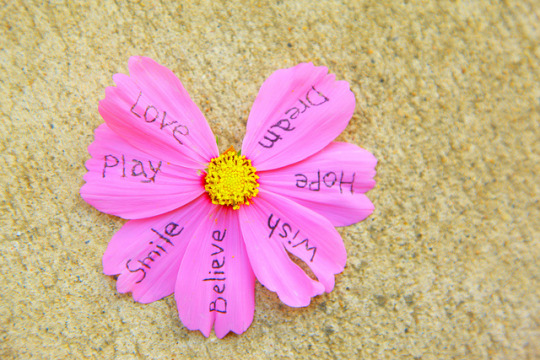
A Career in Occupational Therapy
How did you decide to become an occupational therapist? Were you influenced during childhood by a family member or a child with special needs? Or perhaps you were the recipient of therapy yourself, and were exposed to the profession and wanted to repay the debt, and pay it forward?
Whatever the reason, many of us feel a certain calling to this work. Many of us feel that this work is simply an extension of who we are. We find it is not difficult to analyze activities for their therapeutic value, and we know inherently, that functional tasks performed in OT, are simply part of the essence of what makes our clients whole.
As you look at the petals on the flower, what is your missing petal?
Photo credit to D. Sharon Pruitt
3 notes
·
View notes
Text
Occupational Therapy Activities
Occupational Therapy Activities
Occupational Therapists are always looking for ways to help children develop fine motor skills. Children with disabilities often have fine motor delays, and one of the activities of choice is stringing beads to develop what's called a neat pincer grasp. That is where the tips of the fingers touch the tip of the thumb. A lot of special needs children have more of a lateral pinch grasp where the side of the finger and thumb tend to meet.
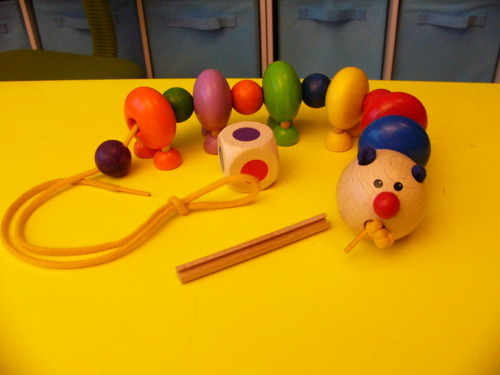
I love working with this toy as a fun way to work on stringing beads and thus that pincer grasp. This is what a pincer grasp looks like:

I call it the caterpillar game. It comes with brightly colored beads with a large hole, and an adapted wooden threader for kids who cannot thread the string (because it is too floppy). I have modified it (as I usually do) and added small beads which means that I can grade the activity to make it a little more difficult as kids' skills improve. The game has a brightly colored dice that matches the bead colors. Roll the dice and whatever color it lands on, that is the color of bead to thread. Kids love it.
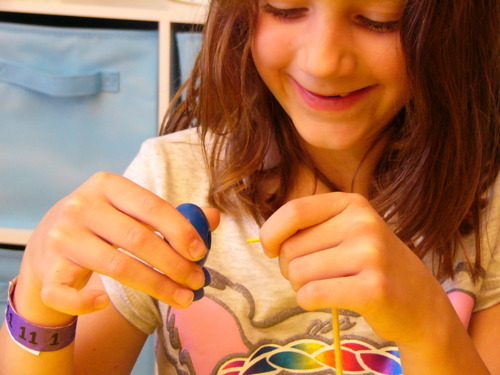
If a child is not using pincer grasp when threading on the way into the hole, don't worry, they will to grasp the string on the way out.
What the trained eye will notice here is that this child has switched hands. She starts with her non-dominant (left) and switches to her right, which is the hand she should be using to hold the string.

The game takes about 10 minutes to play and kids love it when the dice is rolled but that color is all taken.
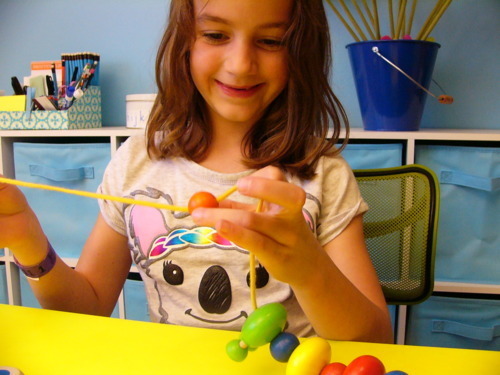
It's interesting to see how kids will organize the colors, or how they'll arrange the colors and sizes. They teach me so much with their idiosyncrasies.
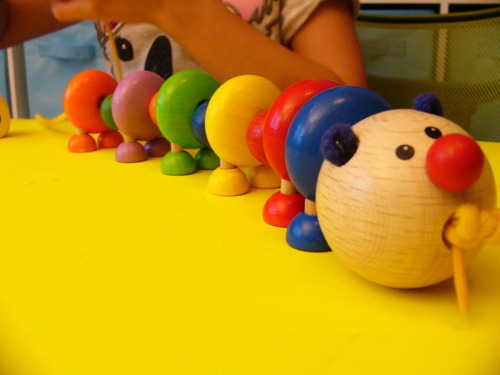
In this last shot you can see I like to alternate between large and small beads to create this caterpillar. There can be a lot of dice rolling...
17 notes
·
View notes
Text
A child's magical world
A child's magical world
This morning I was waiting at the front window with my daughter. We were watching out for her carpool to arrive. I am usually too absorbed in my own thoughts on school mornings to stop and step into a child's magical world. She asked if I'd like to see her "scanner". I said I'd love to. She breathed on the window pane and revealed......all the pictures she had drawn there before. It was really neat. It was like finding an old notebook, but a lot more fragile, like the dust on moths' wings.
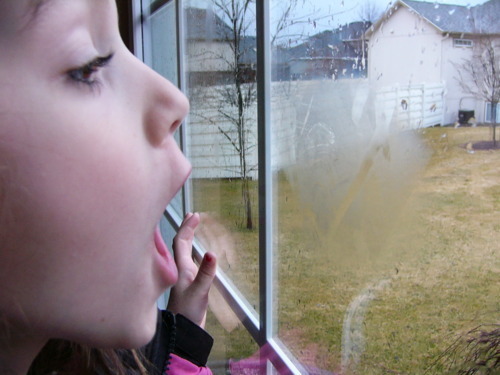
She then proceeded to write some new messages to reveal at a later date, perhaps next week when she has a minute while she's waiting for the carpool again.

I had no idea there was so much written on my front windows.

When we stop and take the time, our children can teach us so much.
0 notes
Text
Help with handwriting over video call
Help with handwriting over video call
Several people have asked me about the video call aspect of Write Interventions. What can I say?
It's really fun.
I can do the work I love from home.

There's a learning curve, and I did a lot of working out the kinks in terms of what works well with video call. There's lots of blue stuff in my skype studio because blue works well over skype.
Kids do the funniest things when if front of the web cam. My clients whom I video call with are already used to using this media. Even the kids are used to it. So you can imagine the kids hamming it up! The hardest part, really, is not to lol while they are being totally cute and funny.

The great part is that the parents play an important role during the entire process; they have a real "hands on" experience of guiding their child through the tasks that I ask them to do. Obviously if a child is being seen by me, then they are struggling in some way.
My friend Aiden who is 5 1/2 and heading into Kindergarten in the fall was having a hard time with writing. He has been in an academic preschool for two years. In the first skype consultation I soon learned that he had a very immature pencil grasp, thus poor pencil control. He couldn't write much beyond his name. He had all 4 of my favorite pencil grippers (mailed ahead of time) and I found the right one for him right away and we proceeded with the consultation. I could see the look of relief on his mom's face just with that part taken care of. It turns out that he didn't know has alphabet very well and made mistakes reciting it. Next was cutting with scissors. Aiden could cut along a straight line, but couldn't cut out a circle. He had difficulty loading (holding) scissors and when he really struggled and became frustrated with that we moved him on to the next task. Aiden completed the VMI ( a standardized test looking at eye hand coordination) and I was able to score it on the spot and share with his mom that Aiden would not have qualified for school-based services. He did, however, need some fine motor skills help and handwriting help. His mom purchased my Fine Motor Skills kit and My Alphabet Book and I mailed her a good cutting skills book that I use a lot. We booked a session for a week away so I could show Aiden exactly how I wanted him to use the fine motor activities and the alphabet book.
We booked a follow up session a month later to give Aiden enough time to work on all the activities. I called mom at the 3 week mark to see how he was doing. I didn't really think he needed another session after his mom told me how great Aiden was doing. But she insisted, because she wanted me to see for myself that he was doing all those things that were so hard for him in the beginning.
So this time when we did the video call, he was acting like the teacher, and I got to see how well he was doing! He was even finishing the blank pages in My Alphabet Book (not copying).
Big smiles all around, and best of all, Aiden is ready for Kindergarten in the fall.
And they pay me to do that!
0 notes
Text
Teach your child to write the alphabet in 30 days
Teach your child to write the alphabet in 30 days
In Malcolm Gladwell's bestseller Outliers: The Story Of Success he describes the phenomenon of how successful people have practiced, on average, 10,000 hours to achieve mastery of a skill. Real mastery. That is about 5 years of full time work 50 weeks a year, 40 hours a week. Top athletes, like Serena Williams lead lives that average people can't begin to imagine because they spend many more than 10,000 hours to get to the top of their game. The hours and hours of practice that go into being at the top in your game leave little room for anything else in your life.
In the world of occupational therapy, in school based practice, and in education we know that it takes at least 30 repetitions of the same material to learn something new. That can be in the form of a song as in auditory learning, something physical in PE or with handwriting as in a motor plan, something visual like recognizing shapes and colors, something emotional like social skills such as caring and sharing or greetings, and with daily routines in the classroom.
Steve Pavlina popularized the notion that we humans can form a new habit by performing that task daily for 30 days in a row. Recent research in the sciences confirmed that it takes 30 days for myelin sheaths (that cover nerves or neurons) to complete the process of covering the nerve pathway once a new pathway has been forged in the brain.
The culmination of these thoughts led to the genesis of My Alphabet Book. I believe its success lies in its simplicity.
Many handwriting and penmanship programs have broken the handwriting task down into so many steps that the end product is lost in individual strokes!
Keep it simple
Repeat
Do it for at least 30 days or until mastery has been achieved
Check for mastery
A new skill has been learned.
Celebrate success.
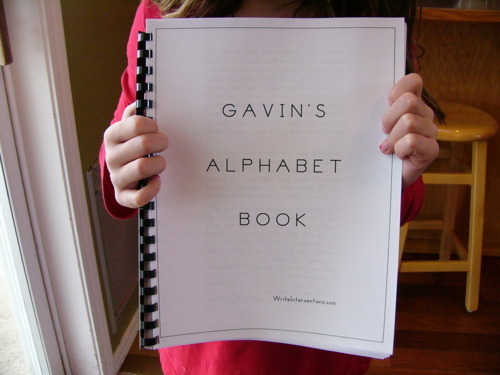
1 note
·
View note
Text
The Twist 'n Write as a training pencil
The Twist 'n Write as a training pencil
Several of my students were given twist 'n write pencils at the beginning of the school year to help correct an immature digital brace grasp. A digital brace grasp looks like this:
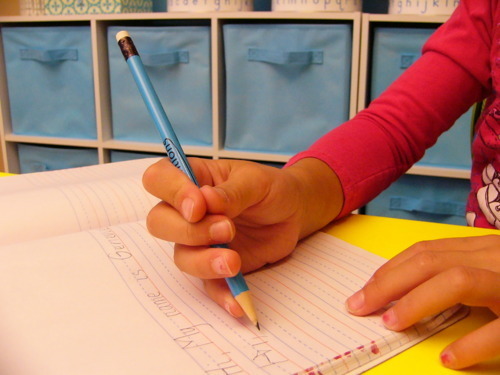
A twist 'n write is the best choice to correct this type of grasp, if used properly, as the child really has 'no other place to go" with this pencil in terms of finger position:
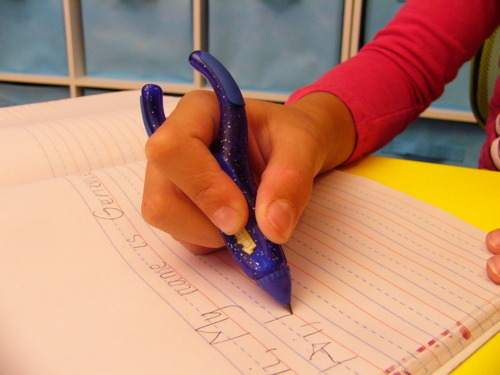
By now though, my students can all maintain a mature dynamic tripod grasp WITHOUT a twist 'n write pencil, even the ones with the most severe digital brace grasps I had ever seen. Some of them are doing this with a stetro style pencil gripper to help maintain the mature dynamic tripod grasp, while some are simply using a regular pencil without any gripper at all. My friend Jasmine who has a severe instability of her thumb joint tried a grotto gripper for a while which sort of helped, but new she is on a stetro gripper. Jasmine also uses as soft thumb splint (we're talkin' hot pink polypropylene) for additional joint stability.

To achieve this kind of change, the child needs to use the twist 'n write all the time so that a new motor plan can take shape when writing. This usually takes 1-4 months. I always leave 2-3 pencils with the teacher for spares/backups and one to go home with the student and I make sure i keep the teacher well stocked. The wonderful teachers I work with all support this growth!
Three cheers to the makers of the twist 'n write for this wonderful pencil. It has had such a positive impact on the lives of so many children I work with.
0 notes
Text
Meet Bob; a perfect fine motor toy
Meet Bob; a perfect fine motor toy
Bob is a hard working guy I know. My friend Katie introduced him to me a couple of months ago. What she actually did was asked me if Bob could stay at my house, or if I knew anyone who would like to keep Bob. Once I checked out the size of his rig, I knew I'd keep him for myself! I knew LOTS of kids who would benefit from spending some quality time with Bob, his forklift, and his big rig.
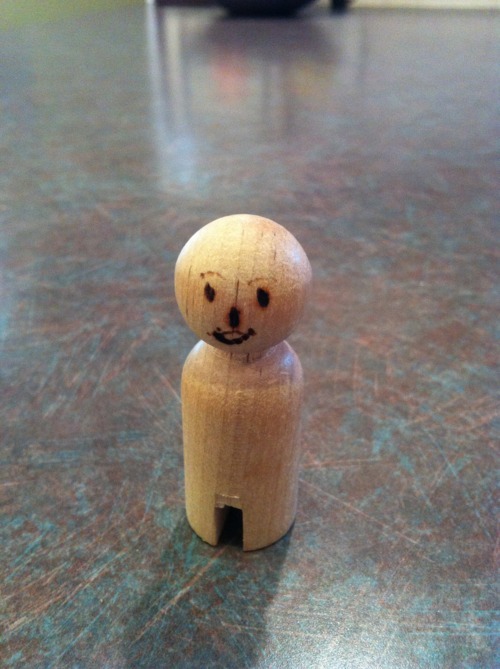
Bob's truck is one of those "perfect" OT toys. Perfect in that it promotes play skills with an emphasis on imaginary play. In addition it captures many of the elements of the foundation fine motor skills that we are looking to develop in children. Lastly, it involves some problem solving and sequencing skills.
What does the toy do?
Bob is a forklift and big rig driver. His job, with the help of a child, is to load two pallets of four barrels into the back of his big rig and deliver the freight to another location, and unload the pallets.
The barrels must be placed carefully on the pallet. I usually have kids use their fingers or ice tongs for this step. The forklift must be all the way in the down position to pick up the pallet with the barrels on it. To raise and lower the forklift it has to be wound from the back with the wooden knob. The forklift has to be raised up about half way to load into the back of the big rig. The forklift can tip, so care must be taken to regulate the amount of pressure on it. The first pallet loaded must be slid back deep into the truck by hand to allow room for the second pallet. The process is repeated for the second pallet.

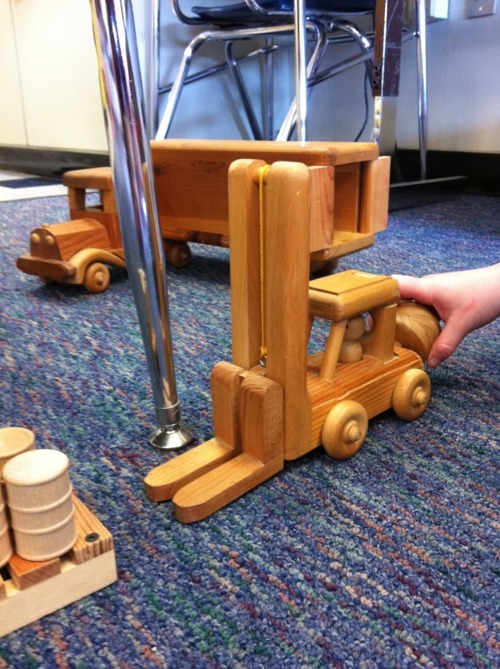



Even though I described it as the perfect toy earlier, it actually has a few little quirks that make it interesting and challenging for kids. One of those is that the doors on the back of the big rig are quite hard to open, so kids have to really pull hard on them. Another is that Bob does not easily slide into the big rig cabin, and must enter through the rear window. The trailer unhooks, but then it tips, and the barrels go rolling around in the back, causing the kids to stress about their carefully loaded goods. Overall, the toy requires a lot of pressure regulation of the hands.
The kids I have used it with in therapy want me to bring it every week forever and ever. I usually repeat the same activity for 3 sessions in a row, or until mastery has been achieved, depending on what each child needs. We make up fun scenarios about what is in the barrels and where Bob is going to drive to. It is delightful to hear what kids have to say on this!
Katie said she bought the toy at Pike Place Market in Seattle. Thanks again Katie!
0 notes
Text
Handwriting in the 21st Century
Handwriting in the 21st Century
An Educational Summit was held on January 23rd hosting 150 of the country's top thinkers on the topic of education and handwriting including one of our own; Jane Case-Smith, OTR. You can read the white paper at http://act.zaner-bloser.com/v2/about.php . It is great food for thought and brings together some meta-analysis on handwriting instruction, its impact on reading writing and language abilities, and also it's impact on brain function.
This last part, the impact on brain function definitely caught my attention. Why? Because of people's willingness to quickly jump to keyboarding as a substitute for handwriting. Studies in the white paper show the relationship between letter printing and brain activation. In the brain's visual regions, when comparing writing, typing, tracing and visual control much more activation was exhibited after the writing experience than any of the other experiences.
This information is so important for our young learners. The interplay between receptive language, reading, expressive language and writing and decoding, comprehension, spelling and composition are all supported when children learn to print their letters. Once handwriting becomes automatic, students can focus on the cognitive task of writing to communicate their ideas.
Thank you to Zaner-Bloser and Saperstein Associates for this important White Paper.
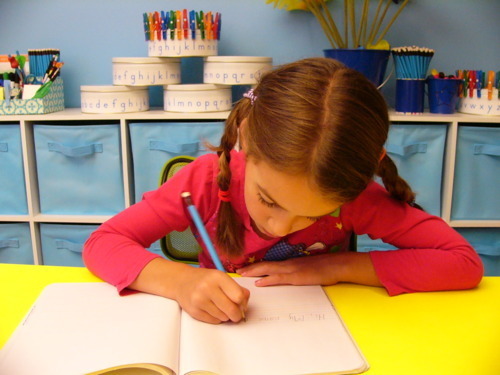
4 notes
·
View notes
Text
Make you own handwriting worksheets!
Make your own handwriting worksheets!
Each handwriting program I have used has some really great qualities that I love about it. I had always wanted to create professional looking worksheets for my students and clients, when I discovered the wonderful world of Educational Fontware!
This software can be found at www.educationalfontware.com and is a great way to create your own worksheets, just the way you want them to look. There is definately a learning curve for the program, and adding cursive is a whole other dimension, but once you get going, you will be glad you purchased this program. It comes with over 200 fonts!
What I love about it is that the materials you create make such "clean" copies. For kindergarteners, I love to create each students' name page in the font to match what each teacher is using, and get their name letters down into rote memory with correct top down left to right formation. For example, you can create student's name in any size font, with the little letter arrows, with or without lines, all capitals, lower case etc. You can mix and match the size, and variables to match where your students are at in penmanship.
For any Kindergarten or first grade teachers on your Christmas list, it makes a great gift!
0 notes